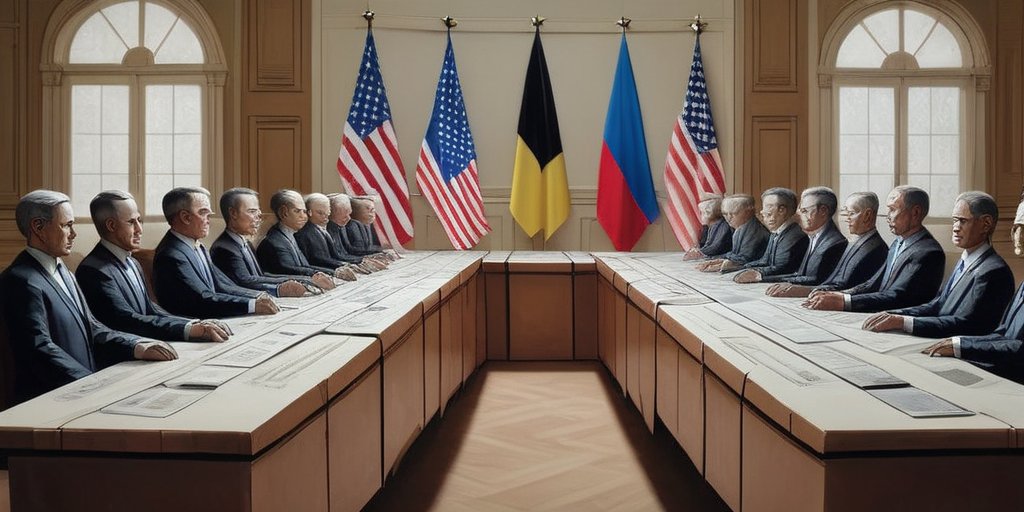In an unprecedented effort to halt the ongoing war in Ukraine, President Donald Trump engaged in direct conversations with both Vladimir Putin and Volodymyr Zelensky this week. This diplomatic move, marking the most intense attempt to negotiate peace since Russia’s invasion three years ago, has been met with mixed reactions and escalating tensions.
Despite Trump’s well-reported proposal of a 30-day ceasefire, initial feedback from Putin revealed a clear rejection, indicating a reluctance from the Kremlin to close the door on hostilities. Trump, however, has been strategically framing the start of dialogue as a significant achievement, asserting that every step toward communication is a victory in itself.
The White House’s narrative promotes the appearance of substantial progress in peace talks, suggesting that Trump possesses the unique capability as a dealmaker who can establish a peaceful resolution to the conflict. In fact, the administration is keen on maintaining an optimistic facade to bolster support for Trump as a leader capable of resolving complex geopolitical issues.
Yet, the reality is starkly different. Each party involved appears to be playing a blame game, leveraging this diplomatic engagement to further their individual narratives. The friction between Russia and Ukraine was palpable when both sides accused each other of violating an unratified agreement aimed at protecting critical energy infrastructure. These disputes have heightened doubts about whether a peace deal is as imminent as Trump posits.
Amid this diplomatic theater, the Kremlin’s unwillingness to compromise on vital conditions showcases a steadfast intent to maintain its objectives in Ukraine. Notably, Putin’s insistence on preconditions that would undermine Ukraine’s sovereignty, such as the displacement of its government and the demobilization of its forces, complicates the potential for a sustainable ceasefire.
Despite these hurdles, Trump has appeared more amenable towards Zelensky, possibly due to the latter’s strategic shift towards a more conciliatory tone following previous tensions. After a recent hour-long conversation, Trump announced his commitment to assist Ukraine with essential military resources, including air defense systems. Trump’s apparent change in stance is significant, considering he previously withheld military aid as leverage to facilitate his ceasefire plan.
Reflecting on the developments, Trump shared on Truth Social, “Just completed a very good telephone call with President Zelensky. We are very much on track.” While his enthusiasm reflects an optimistic outlook, analysts remain skeptical about the feasibility of a peaceful resolution given the sustained hostilities.
The aftermath of these diplomatic interactions remains uncertain. Secretary of State Marco Rubio has indicated that discussions with Russia will continue, underlining that Moscow’s forthcoming decisions will be pivotal in determining the possibility of genuine progress. Finland’s Foreign Minister Elina Valtonen summarized the situation aptly: “Trump wants peace. Europe wants peace. Ukraine wants peace. And there is only one missing – that’s Putin.”
As both Ukraine and Russia vie for Trump’s attention, the fate of a potential peace deal hangs in the balance. Trump now faces the critical challenge of reconciling the conflicting interests of both nations while maintaining his image as a capable leader. The coming days will reveal whether this round of diplomacy is a genuine step towards lasting peace or merely an illusion crafted to uphold Trump’s diplomatic legacy.
